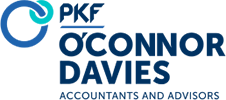Key Takeaways
-
Exempt organizations can now use IRS Direct Pay to submit Form 990-PF and Form 990-T payments directly from U.S. bank accounts without enrolling in the Electronic Federal Tax Payment System (EFTPS).
-
Direct Pay offers private foundations a secure, one-time payment option for balance due and estimated tax payments — reducing reliance on wire transfers or complex EFTPS account setups.
-
Despite limitations on payment frequency and amount, Direct Pay helps streamline tax compliance by simplifying payment procedures for eligible exempt organizations.
The IRS recently broadened its Direct Pay service, giving exempt organizations — especially private foundations — a practical alternative to the Electronic Federal Tax Payment System (EFTPS) for certain federal tax payments. With this update, organizations can now submit payments for Form 990-PF and Form 990-T directly from their bank accounts. Enrollment in EFTPS is no longer required for these transactions.
Direct Pay has been available for years to individual taxpayers, but its expanded capabilities make it a valuable tool for private foundations that either are not enrolled in EFTPS or would prefer a quicker, less cumbersome option. The service is free, secure and designed for one-time payments made through the IRS website. For many private foundations, this removes the need for same-day wire transfers or more complex payment arrangements.
The following highlights the types of payments covered, how Direct Pay compares with EFTPS and what foundations should know before using the system.
In addition to this update, we invite you to join us on December 4, 2025, for our Private Foundation Symposium — available both in person and via live stream.
Payments That Can Be Made Through Direct Pay
Organizations may now use Direct Pay to submit the following:
Form 990-PF (Return of Private Foundation)
- Balance due with a filed return or an IRS notice
- Estimated tax payments
Form 990-T (Exempt Organization Business Income Tax Return)
- Balance due on a filed return or IRS notice
- Estimated tax payments
How Direct Pay Differs from EFTPS
EFTPS remains the primary and most comprehensive platform for federal tax payments. Direct Pay, however, offers a convenient option for organizations that need to make a payment quickly and do not want to register for EFTPS.
Key distinctions between the two systems include:
- Registration Requirements: Direct Pay does not require any sign-up. EFTPS, by contrast, requires account setup and an activation PIN that arrives by mail.
- Account Management: EFTPS accounts may be deactivated due to inactivity. In addition, organizations that change bank accounts must update EFTPS promptly to avoid rejected payments. Direct Pay has no ongoing account management needs.
- Daily Payment Limits: Direct Pay limits organizations to two current or future-dated payments per day (up to five for businesses). EFTPS allows far more frequent activity, which is important for organizations that process multiple payments.
- Access to Payment History: Direct Pay users can retrieve past payment history by logging into their IRS online account or by searching confirmation numbers. EFTPS offers up to 16 months of payment history and visibility into pending payments.
- Phone-Based Payments: EFTPS provides 24/7 automated phone payment services. Direct Pay payments cannot be made by phone.
- Customer Assistance: EFTPS offers live phone support for payment inquiries. Direct Pay phone assistance is limited to issues like confirming a payment or resolving identity-verification problems.
- Payment Amount Limits: Direct Pay transactions must be under $10 million, whereas EFTPS can accept payments up to $50 million.
What Both Systems Have in Common
Despite their differences, Direct Pay and EFTPS share several important features:
- Payments can be made from a U.S. checking or savings account.
- Payments submitted by the due date are considered timely even if funds withdraw later. (Withdrawals for payments over $1 million, or those made on weekends, bank holidays or after 3 p.m. EST, may occur the next business day.)
- Each system provides a confirmation number and optional email receipt.
- Payments can be scheduled up to one year in advance.
- Pending payments can be canceled up to two days before the scheduled date.
Note: Neither system supports payments originating from foreign banks without a U.S. affiliate. Both are unavailable nightly from 11:45 p.m. to midnight EST.
Using Direct Pay
To use Direct Pay, visit the IRS website here: Pay Business Taxes from Your Bank Account
Conclusion
The IRS’s expansion of Direct Pay provides private foundations and other exempt organizations with practical, easy-to-navigate payment options for Form 990-PF and Form 990-T obligations. For organizations not enrolled in EFTPS — or those seeking a faster, more straightforward process — Direct Pay can ease administrative burdens and streamline compliance. As tax-payment methods continue to evolve, leveraging tools like Direct Pay can help organizations stay efficient and focused on their exempt-purpose activities.
Contact Us
We welcome the opportunity to answer any questions you may have related to this topic or any other accounting, audit, tax or advisory matters relative to private foundations. Please call 212.286.2600 or email any of the Private Foundation Services team members below:
- Thomas F. Blaney, CPA, CFE
Partner, Co-Director of Foundation Services
tblaney@pkfod.com - Joseph Ali, CPA
Partner
jali@pkfod.com
Scott Brown, CPA
Partner
sbrown@pkfod.com - Anan Samara, EA
Partner
asamara@pkfod.com - Christopher D. Petermann, CPA
Partner, Co-Director of Foundation Services
cpetermann@pkfod.com
Michael R. Koenecke, CPA
Elizabeth Gousse Ballotte
Partner
eballotte@pkfod.com
Partner
mkoenecke@pkfod.com

